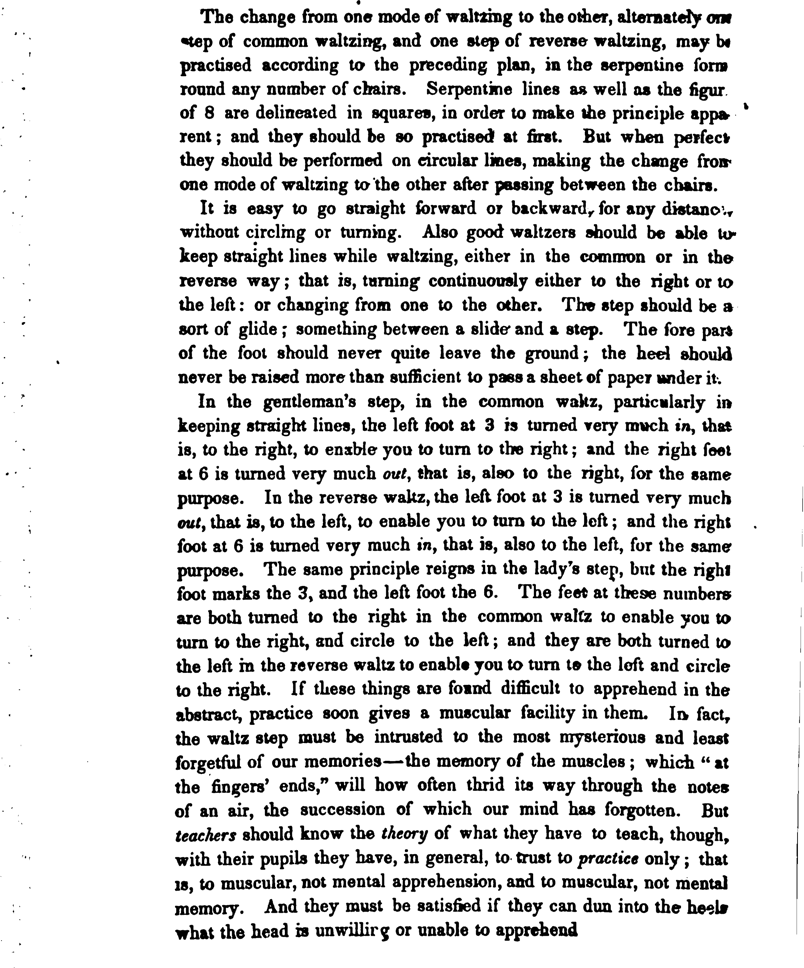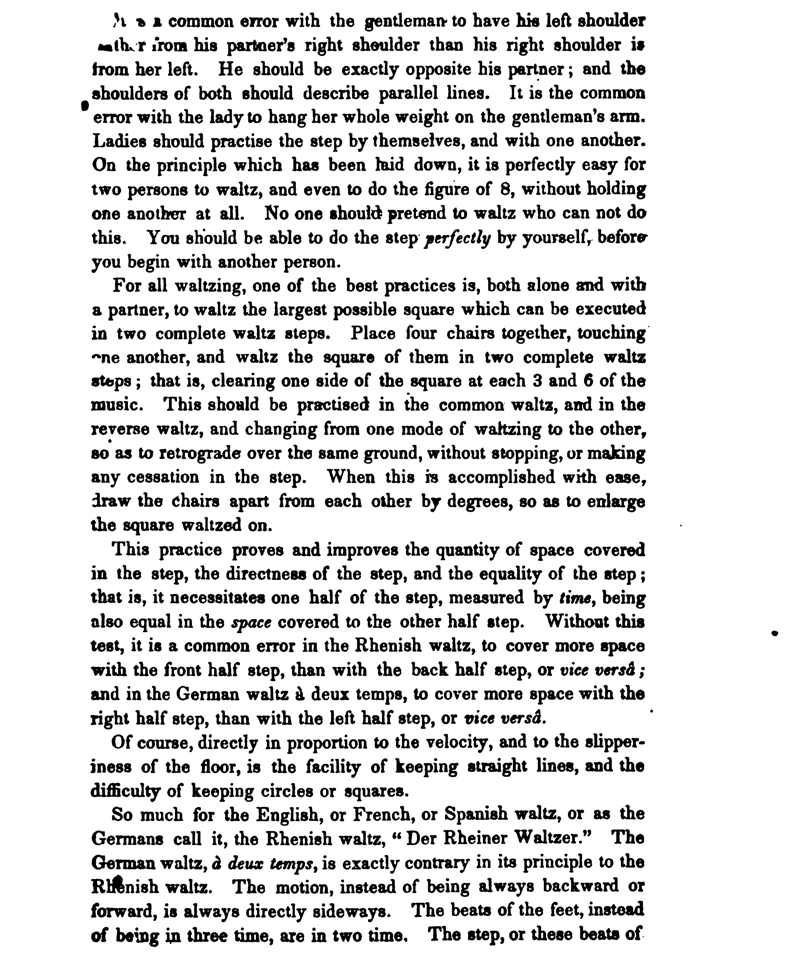Rhenish Waltz (Spanish Waltz) (Alfred d'Orsay, Etiquette: or a Guide to the Usages of Society, 1846, p. 54):





This is an odd variant of the 19th century Waltz, from Count Alfred d'Orsay [Charles William Day]'s Etiquette: or a Guide to the Usages of Society (1846).
Day begins his chapter on waltzing by railing against the failures of his contemporaries:
One can scarcely conceive of the agonies which I have suffered in observing my countrymen making themselves ridiculous by their attempts and failures in the art of waltzing. But it is quite impossible to imagine the martyrdom which I have endured in observing my countrywomen making themselves ridiculous in the same way.Then he describes the original pivoting waltz step: "At the 1, 2, 3, the lady runs round the gentleman while he twirls; and at the 4, 5, 6, the gentleman rounds round the lady while she twirls."
Instead, Day writes, "the whole affair should consist, when perfect, of three steps forward, in a circular direction, and by turning, of three steps backward, in the same circular direction."
The Lead is instructed to take three steps back, turning on count 3, while the Follow takes three steps forward, turning on count 3. Then the Lead stakes three steps forward, turning on count 6, while the Follow takes three steps back, turning on count 6.
Day notes that the Rhenish Waltz can turn either to the right or to the left. Both variations start with the Lead stepping back on the left foot on count 1.
With regard to style, Day writes that "the step should be a sort of glide; something between a slide and a step. The fore part of the foot should never quite leave the ground; the heel should never be raised more than sufficient to pass a sheet of paper under it."
In the end, Day's primary goal seems to be to get the waltz to travel as far as it possibly can, rather than rotating. The result is almost more of a One Step variation (60 years ahead of it's time) than a 19th century waltz, but it's a fascinating oddity nonetheless.
© 2016 Nick Enge
(Click to expand)
Rhenish Waltz (Spanish Waltz) (Alfred d'Orsay, Etiquette: or a Guide to the Usages of Society, 1846, p. 54):





For more dance descriptions, see our three books on dancing:
The Book of Mixers: 100 Easy-Teach Dances for Getting Acquainted (2022) by Richard Powers and Nick & Melissa Enge,
Cross-Step Waltz: A Dancer's Guide (2019) by Richard Powers and Nick & Melissa Enge, and
Waltzing: A Manual for Dancing and Living (2013) by Richard Powers and Nick Enge.
Home About Dances Manuals Search